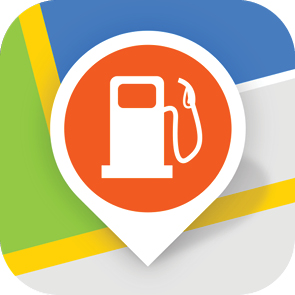GEAR FOR YOUR NEXT ADVENTURE
You have explored the local destinations and even taken a few trips up and down the coast. There are some places you really want to explore but they are a little further afield and require some extra planning and trip preparation. Let us help you to gear up to get out further afield and experience some truely remarkable destinations and experiences.
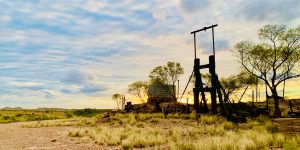
There is plenty of information out there about how to build the ultimate touring vehicle. We think that these can be a little misleading, as what is the ultimate vehicle build for one person is not necessarily what is perfect for you. The other issue is that there is no such thing as the perfect or ultimate tourer. Over the years we have found talking to other travellers and looking at how they have setup their vehicles has uncovered great nuggets of information that is sometimes relevant to what we want to achieve. Regardless of how you approach your own build, there are key areas that everyone needs to address, weighing up return on investment and frequency of use.
Every decision you make has consequences that will effect your load carrying and performance of your vehicle.
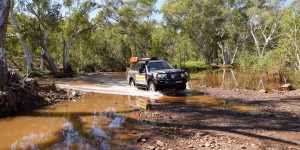
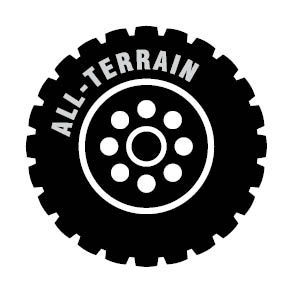
Tyres
Tyres can be a hot topic. Like car brands, everyone has an opinion on what is good and what isn’t. There are a multitude of factors as to why one person has a great experience with a particular brand compared to another’s less than ideal.
When we choose tyres, we look for what other people are using and then ask them what their experience has been like.
When considering the type of tyre (A/T versus M/T) the decision is easier; what is the predominant surface we will be driving on and how often will other terrain surfaces be encountered.
Tyre size is also a popular topic. We take a simplistic approach and consider how hard it will be to get replacement tyres in the event that we need to replace them when travelling. Having an exotic rim and tyre package might give your rig some street cred but is it practical?
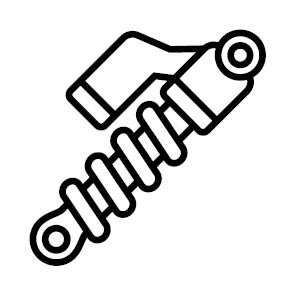
Suspension
For many 4WD’s, there is nothing wrong with the stock suspension. Changes need to be considered if you are wanting to increase the GVM of your vehicle or are towing consistently.
Again, one person’s trash is other’s treasure when it comes to suspension brands and setups. Consider the tyre of driving that you intend on doing now and the future and the types of load your vehicle will be carrying/towing. Speak to others about their experiences.
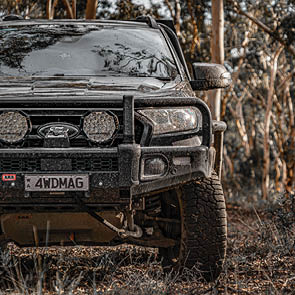
Vehicle protection
Some argue that a bullbar is not required, we disagree. Again, this comes down to personal choice and the type of driving you intend on doing. Adding bar work to your vehicle will change how it handles and more than likely will require a suspension change to compensate. We are advocates of steel bars however there are new options available that offer the structural integrity of steel while being much lighter.
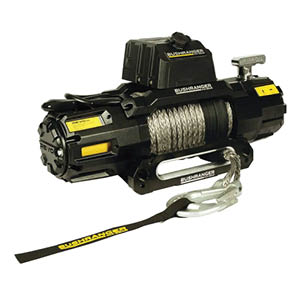
To winch or not to winch?
A winch has long been a standard accessory for anyone serious about hitting the tracks however there is also a school of argument against them. Yes they offer a resource that can assist in extracting your vehicle BUT they also require a suitable anchor point. Before you tell me about burying your spare, think about how deep you have to dig it in to be useable AND will your spare rim withstand the pressures of being winched off?
Having that extra weight, and the requirement for a bull bar to allow for the fitment of a winch needs to be considered against how often you will use it.
You can also consider alternative winch solutions that offer extra versatility, less weight and can be transferred easily between vehicles.
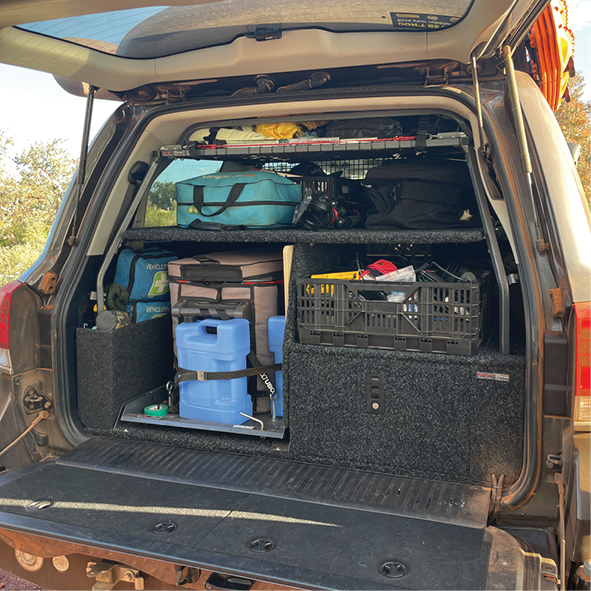
Storage
When we go away, the tendency is to bring everything, including the kitchen sink. When travelling, less is more. How you access everything can also be the difference between an enjoyable trip and one spent constantly loading and unloading your vehicle looking for that 10mm socket.
Do you need to have your storage solution installed all the time? Can you reduce the day to day vehicle weight when not travelling? Do you need to have your fridge in the vehicle all the time? If you prefer to have everything in the car all the time, can you find a solution that is lighter?
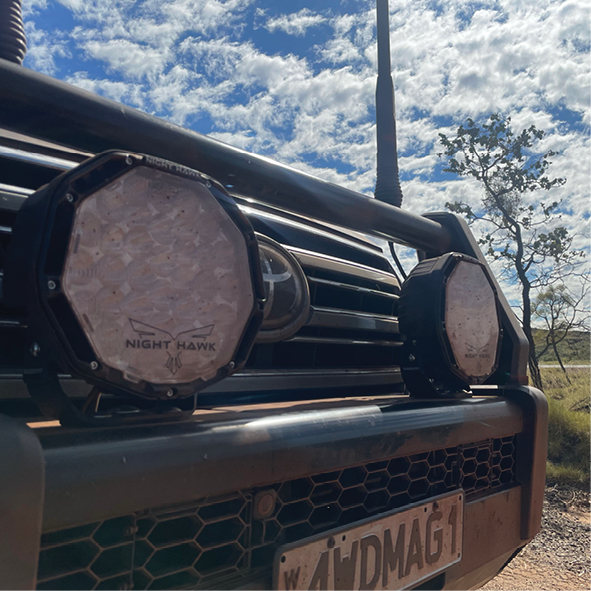
Lights
It looks really cool having light-bars and spotlights all over your rig, but is it practical? We have done our fair share of night driving and have done it with two spotlights. Is there any point being able to read a newspaper 3km down the road? Again, looking at the cost of lights versus how often they are used is a good exercise to determine if you need it.

Fuel
You can only go as far as your fuel tank will allow so many opt for increasing the capacity. Remember, doing so effects your cargo capacity as your vehicle’s GVM is usually calculated on the factory fuel load. If you are changing the fuel tank on a 200 series LandCruiser then you also need to consider the placement of your now homeless spare tyre. This is going to incur further weight as you look for a rear bar replacement and spare wheel carrier.
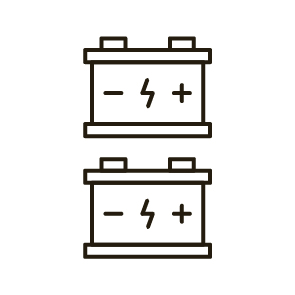
Second battery
Many modern vehicles have very little room to ad an additional battery under the bonnet and other locations must be sought out. Lithium batteries, although more expensive, tend to have a better return on investment when you consider: their weight, useable energy storage, and longevity compared to traditional batteries. There is a growing trend for battery packs that are multipurpose, which are removable and can be used away from the vehicle. This adds to their usefulness, untethering them from just the vehicle.
We chose a Ford Ranger Wildtrak for our “work vehicle”. The choice of the Ranger over other brands came down solely to the seat comfort versus other models taken for a test drive. The main idea behind this vehicle build was to allow us to roam around the countryside, creating content for the magazine.
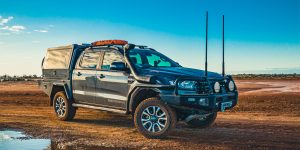
The choice of the ute over a wagon was so that we had a greater GVM (gross vehicle mass) and therefor a greater load carrying capacity.
The following (in no particular order) is what we chose to install on our vehicle.

Tyres
Knowing that much of this vehicle’s life would still be spent driving along bitumen roads but with the need to be able to handle every other type of terrain, we opted to use an all-terrain tyre (AT).
The Falken Wildpeak AT3 ticked all of the boxes for us. At the time of fitting, the Wildpeaks also had a guarantee against sidewall punctures, further reinforcing our decision to choose these tyres.
At the time of writing this, the vehicle has travelled in excess of 40,000km on the Fallen tyres. Road noise is not high and they have performed perfectly on and off road, delivering a sure grip to what ever surface we are travelling on.
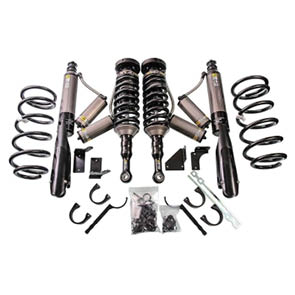
Suspension
The stock suspension never even got used before it was stripped off the vehicle. We opted for the ARB Old Man Emu BP51 suspension system with 600kg constant load leaf springs in the rear. It is fair to say that the Ranger drove like a skittish mare when there was no load in the tray, however when loaded, she drives like a dream.
As part of the suspension upgrade, the vehicle also received a 50mm lift and a GVM upgrade, taking it from 3200 to 3500kg.
It is important to note that when the vehicle is loaded to 3500kg, we are NOT able to legally tow more than 2500kg without exceeding out GCM (gross combination mass) of 6000kg.

Front-end protection and bar work
ARB’s Summit Bull Bar was our choice for the Ranger. Although this bar requires the purchase of a seperate recovery point (versus some other brands) we still felt it was a proven choice. The front loops provide additional protection to the front end in the event of an animal strike and helps to prevent “skippy” going through your windscreen if you hit one on the bounce. This is compared to the number of bumper replacement types of bars that appear to be gaining popularity. Yes they do look good however we prefer function over form.
Made of steel, the bar is also winch compatible.
The Ranger also has the integrated ARB side steps and rails which provide an additional level of protection against front and side impacts. The side rails paid for themselves not long after we took it for a spin, rolling over an unseen log that flicked up and hit the side rail with considerable force.
Despite considerable pressure, we chose to leave the bar work black (not colour coded).
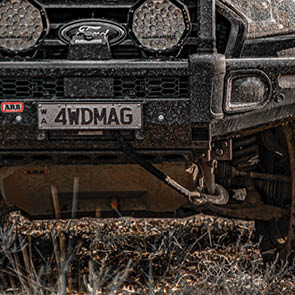
Under-body protection
To ensure that we protected the vital underbelly of the vehicle, we opted for ARB’s under vehicle protection (UVP). It does add additional weight however the piece of mind knowing that there is 3mm of laser cut steel protecting the drive train is worth it.
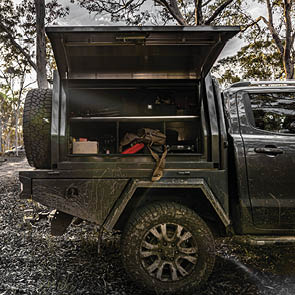
The tray and canopy
OK, so this was a considerable investment in this vehicle and a lot of sleepless nights were spent coming up with the perfect solution. In the end, we chose to engage with the team at On Track Fabrication (OTF) in Neerabup.
The decision to have a tray and canopy fabricated was so that the ute could actually be used as a ute (the standard tubs are close to useless) and the canopy could be removed when required. The canopy meant that we could have full access to the inside from either side (as opposed to only be able to access the load bed from the rear).
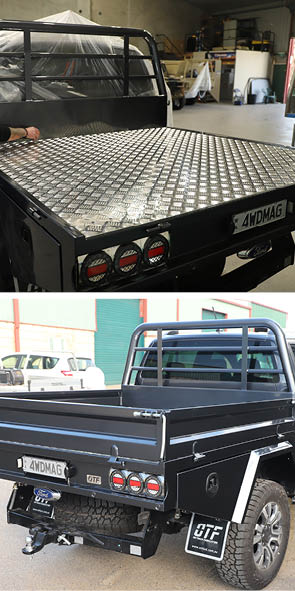
More on the tray
The tray was constructed in steel. We discussed the idea of an aluminium tray however it would have weighed about the same. In the event of cracking, a steel tray is much easier to weld (especially in a remote location) than an aluminium one.
Two under-tray tool boxes were custom fabricated. The drivers side is the largest and is able to store all of the recovery gear for the vehicle. On the passenger side, the storage is less and houses an ARB twin compressor and the associated gear. The toolbox door also hides the fuel cap and water tank filler.
There is an 80 litre water tank fitted underneath the tray with a gravity fed tap at the rear. A 4 litre air tank is also fitted under the tray, hooked up to the air compressor circuit.
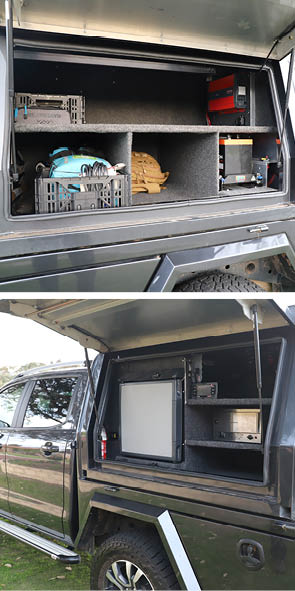
... and the canopy
The aluminium canopy has two gull wing doors and is split inside 70/30. The larger space, located on the driver’s side, features a full width shelf that runs through the entire area and is supported underneath by two large storage pockets. It has been designed to allow for various cargo configurations, depending on the purpose of the trip.
The smaller, passenger side, is designated as the kitchen. It features a 57 litre ENGEL upright fridge and a Travel Buddy Oven that has been hardwired into the 12 volt system. Half of the space is divided by two shelves that provide storage for food and cooking related implements. We went with the ENGEL upright for weight and space saving. At only 20kg empty, the fridge doesn’t require a heavy slide to make is accessible and consumes very little room. Packed right, the fridge works fine off-road.
Both the tray and canopy have been colour coded to match the vehicle paintwork.
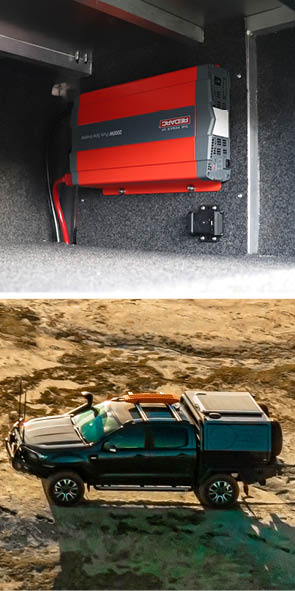
The 12 volt system
The canopy has a REDARC Redvision 12 volt system. Power is supplied by a circuit running from the vehicle’s engine bay as well as a 150w REDARC solar panel mounted to the canopy roof. The REDARC Manager 30 controls the various power inputs and also provides the option to use 240v power for charging, if required. The Redvision “brains” and fuses are mounted high up in the top shelf but remain easily accessible.
A REDARC 2000w inverter is mounted in the driver’s side compartment and gives us the ability to rapidly charge batteries and equipment (much faster than 12v solutions).
There are various 12 and 5 volt outlets as well as 3 x 50 amp Anderson plugs that can be utilised for various power requirements.
Each door and compartment has an LED strip for lighting with the choice of white or orange (orange to prevent swarms of insects)
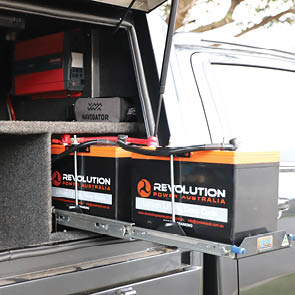
Battery storage
We have two 120Ah Revolution lithium batteries. They are fitted to a battery slide that is installed in the driver’s side compartment of the canopy. The batteries have a C rating of 1, which means that they can charge and discharge themselves in 1 hour. The combined weight of the two batteries is app 20kg. The battery slide from Off Road Downunder, allows for easy access to both batteries when required.

Fuel
Knowing that the standard fuel tank was going to be too small, an ARB Frontier tank was fitted. This more than doubled our fuel capacity and more than doubles our driving range.

The winch
A Bushranger 4×4 Revo 10,000LB winch was fitted to the Ranger to ensure that we had the ability to self recover, given the destinations that we travel to alone. It is fitted with synthetic rope, which drastically reduces the total weight.
To date, we have only had to use the winch a total of 3 times and all have been to recover other vehicles.
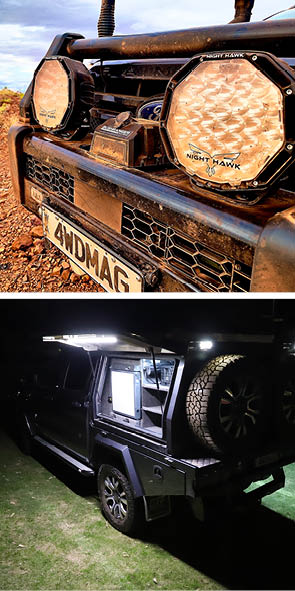
Lights
Another Bushranger 4×4 product, we originally had a pair of their 9″ Nighthawk VLI (variable light intensity) lights. These lights are excellent and served us very well when travelling at night. We were asked to test their new Nighthawk VCT lights (VCT stands for variable colour temperature) and love them. Having the ability to tone down the harsh white light that an LED spotlight throws out helps to reduce eye strain on long drives.
At the rear of the vehicle we also have two 5.5″ light bars. They are connected to the Redvision system and their intensity can be controlled by a dial control, located next the fridge. They provide ample illumination to the side and rear of the vehicle when setting up camp.
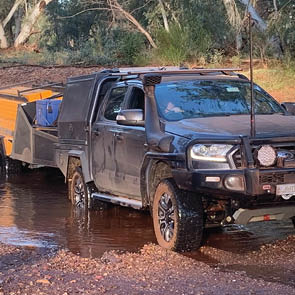
Snorkel
We have no intention of taking the ute for a swim any time soon, however, the installation of the Safari Armax snorkel provides a much greater airflow than via the standard air intake. It lifts the air intake to the same level as the roof, although I still would not consider a water crossing greater than the factory fording depth a good idea unless there was no other option. Safari state that the increased airflow also increases engine performance. We haven’t any proof one way or the other so have to take their word for it but we do find that the air is much cleaner coming into the air filter.
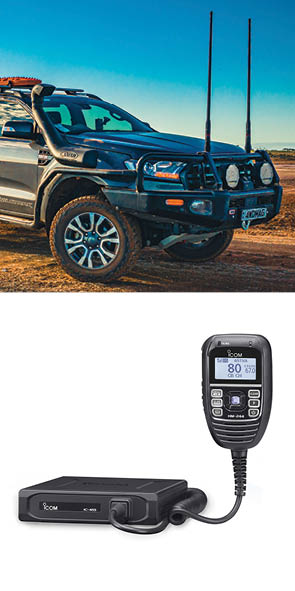
Communications
There are two, large, GME antennas fitted to the bulbar. One is connected to the ICOM UHF radio and the second is connected to a Cel-FI GO mobile phone booster.
The GME antennas were an easy choice, Australian made and tough. The choice of a Japanese made UHF radio over an Australian made one was tougher. At the end of the day we went with the ICOM due to, what we believe, is a far superior build quality.
The CEL-FI Go is fitted behind the rear seat on the passenger side and when fitted to the GME antenna, provides an additional 65db of gain. This gives us the ability to pick up mobile signal in more remote areas (where your handset has no chance)
We also carry two ICOM 5W hand held radios. Each has an external microphone fitted (allowing the unit to be clipped to your belt and the handset attached to your shirt) as well as push to talk, in ear pieces (think Secret Service : ) for more hands-free operation.
There is also a ZOLEO Satellite Communicator. This little unit pairs with your smart phone or tablet and via an app, allows SMS communication from anywhere as well as weather updates and location tracking.
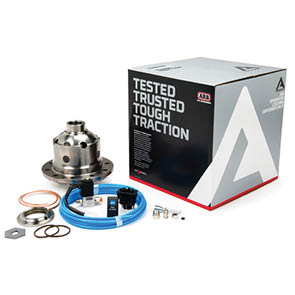
Front locker
The Ranger comes standard with a rear E locker (E for Electric) but given some of our destinations and the chances that we would be on our own, we had an ARB air locker fitted to the front. This increases the vehicles low range, off-road performance exponentially and has the potential to get us into as much trouble as it gets us out of.

The Air compressor
There is an ARB dual compressor fitted in the passenger side toolbox. It is connected to the front air locker and has a 4 litre air reservoir. An outlet also allows for quick hose connection when needing to pump up tyres.

Engine Protection
The engine is protected from dirty fuel by a Direction Plus Preline-Plus pre filter unit. It is also equipped with a water alarm that will alert the driver of any H2O issues.
A Prevent oil separator kit protects the engine by reducing the amount of oil entering it from blow-by gas from the crankcase ventilation system.
Recently we also installed a Transchill Automatic Transmission Cooler Kit. This reduces the transmission temperature when it comes under heavy load towing, towing in sand or in very hot conditions.
If you plan on fitting one of these units, do it before you fit a bullbar. We had to remove the bar work to fit it which adds a considerable amount of time to the installation.
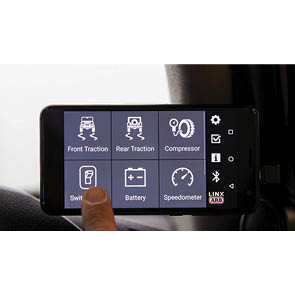
Linx
No, not the deodorant, the ARB Linx system replaced the need for additional switches to be installed to run the compressor, air locker and spotlights (it connects to a range of other ARB accessories as well)
When pumping tyres up, we can set the target pressure on the smart phone display (which you can remove from the cab), connect the air line to the tyre and wait for it to finish. Just like being at a service station.
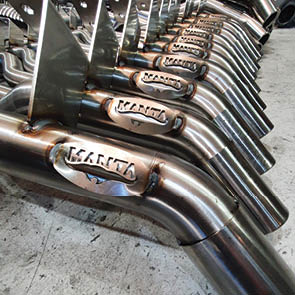
Manta Exhast
This was a recent addition to the Ranger and one I had never originally considered. Since installation, I have noticed some increase in power and the vehicle has a nice note to it. If you ask our kids, they say it sounds like a pigeon.
Manta is a family owned business with operations in both Cunderdin and Melbourne. Their team are fastidious and it shows in the final product.
Manta Throttle Controller
There are arguments for and against throttle controllers. I do know when that it was first fitted (and left on sports mode) I nearly drove up the back of someone as the throttle was so responsive.
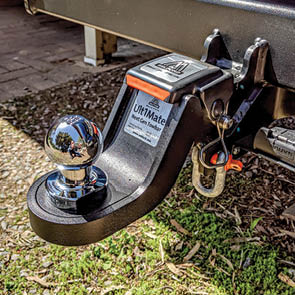
Milford Industries Tow Bar
After removing the original tub, the OEM tow bar hung too low, significantly impacting our departure angle. There are a few options on the market and we needed up settling on a Milford Industries Ult1Mate Next Gen Towbar . It sits much higher up under the chassis and looks a lot better than the original. We don’t tend to get any rattle noise from the hitch when hooked up with a camper or trailer which is also a bonus. Fitment was very straight forward.
We had purchased our 200 series LandCruiser just prior to getting involved with Western 4W Driver. It was an upgrade from our Toyota Prado, which we had found wanting when towing in hilly country. After the initial purchase, it was almost 4 weeks before got our hands on the vehicle, while it was fitted out to suit our holiday touring requirements. The base vehicle is a Toyota LandCruiser (2018) 200 series, Sahara. We went for the Sahara due to it being the only model of LC200 that came fitted with autonomous cruise control. This was a “have to have” due to Chris having two fused ankles as a result of someone falling asleep at the wheel in 2013 and hitting his stationary car. Not having to use the accelerator or break as much during long distance drives makes a huge different to his ability to walk at the end of each day.
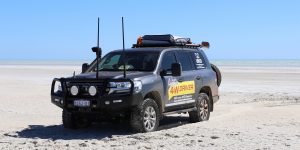
We chose the LandCruiser over everything else as it offered the best bang for buck in terms of reliability and power. The extensive service network of the Toyota brand and the proven reliability of the LandCruiser, plus the raw power that the V8 produces made it a simple choice. Yes, vehicle’s such as the F-trucks, Dodge RAMS and Silverados may offer more power and towing capacity but they are still classed as an exotic import with parts being harder to source and in all cases, the extra width can cause issues when travelling along off-road tracks that might get a little tight. Using these vehicles in town can also be an issue with parking spaces seeming to be smaller. They have their place, however it was not what we wanted.
Tyres
Our initial set of tyres were promised to last approximately 90,000km. We managed to get two thirds of that. With the great run that we have had with our Falken Wildpeaks, we chose to fit these tyres (total of 6) to the cruiser.
They are wearing well and have little road noise. We have found the vehicle feels extremely stable on gravel and other off-road terrain.
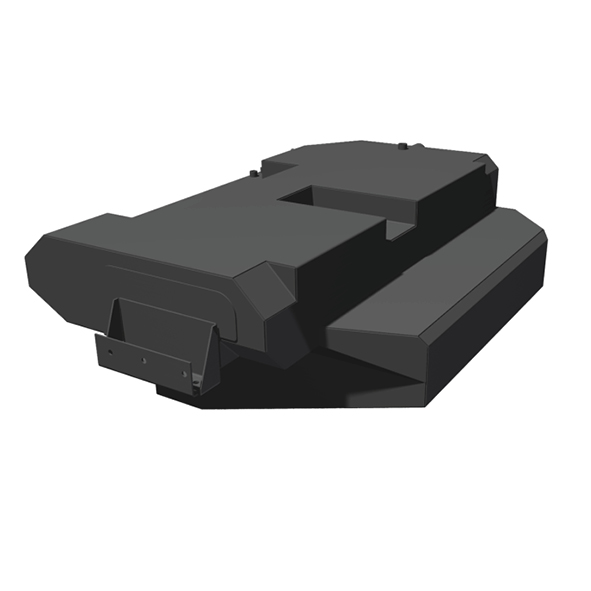
Fuel
Knowing that the V8 can be thirsty, especially when towing a caravan, we opted for a long range tank, pushing our fuel capacity from 120 litres to over 240. This ensures that, even when towing, we have quite an impressive range between fuel stops. We chose the Brown Davies tank, replacing the second fuel tank that comes standard on the LC200’s.
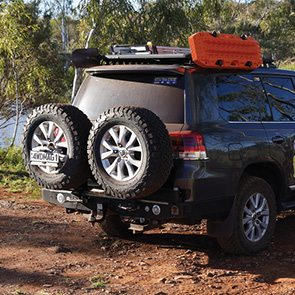
Rear Wheel Carrier
Having the long range tank means that the spare wheel had to be relocated. We opted for a locally built, Outback Accessories unit. It allows us to carry two spares however Karen hates it. She would prefer to be able to get into the back of the car without having to swing both wheels out of the way. I find it is a great way to prevent her from shopping for larger purchases without letting me know : )

Bullbar
We have an ARB Summit Bar fitted. The steel bar has proven itself after a high-speed impact with a kangaroo, resulting in only some panel damage to the side of the vehicle (after hitting the front, driver’s side of the bar). The steel bar proved itself with no bar work damage. It is a winch capable bar but we don’t have one fitted.
Side steps and rails
These were ordered approximately 9 months before they were fitted and were a direct result of the kangaroo strike mentioned above. If they had been installed then we would have avoided the side panel damage that the impact caused.

Spotlights
Initially we had a very cheap set of spotlights fitted that lasted about 27 minutes of use. After throwing that royal pair in the bin, we opted for the Bushranger 4×4 9″ VLI lights. These lights are bright and reach out far enough to offer plenty of warning of anything on the road. As with the Ranger, we were asked to try a set of Bushranger’s new Nighthawk VBP (variable beam pattern) 9″ lights. These are fantastic. Being able to adjust the throw of the spotlights from the cabin, on the fly, means that we can alter the light to suit the terrain that we are driving through.
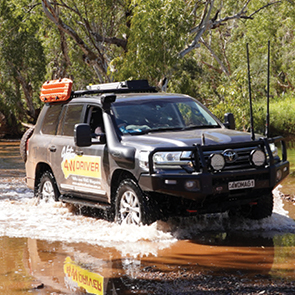
Snorkel and airbox
We have a Safari Armax snorkel fitted and replaced the factory air box with a after market unit.
The snorkel offers an increased airflow and lowers the amount of dust picked up from the factory air inlet located in the front driver’s side wheel arch.
The air box was replaced due to the documented “engine dusting” issues that have been extensively reported. Having a better understanding of how these issues are occurring now makes me think that the air box was not necessary if the correct service schedule is maintained and if air filters are replaced out of schedule when operating in dusty environments.
ECU
We opted for some extra power by fitting a Safari ECU (engine control unit) The unit has 5 settings and does change the way the car drives as well as having the option of switching it off.
On a trip to the Pilbara last year we kept dropping into limp mode with a fault on an injector. On our return to Perth it was discovered that the fault was caused by the wiring harness being rubbed through. This was caused by an incorrect fitment (which was done by “professionals”) and ended up being an expensive repair to replace the cable.
Engine Protection
We have a both a pre fuel filter and a catch can. The pre fuel filter does exactly what it says and the catch can prevents the bulk of any oil carried by the blow back gases from getting into the engine and causing issues.
REDARC DC-DC
We have a BCDC 1240 fitted in the engine bay to provide charge to the second battery.
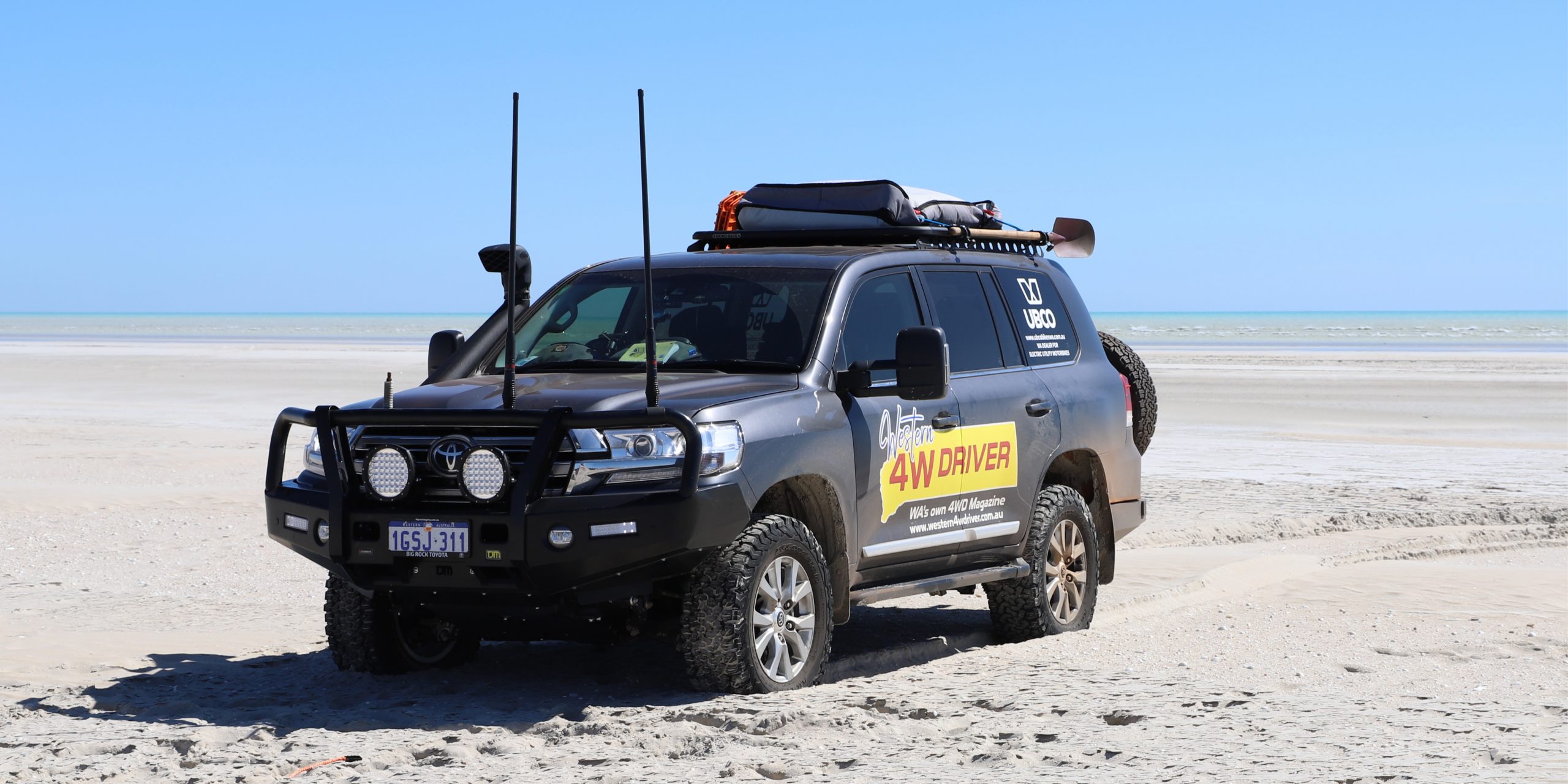
Rhinorack Roofrack
The cruiser has a Pioneer backbone with a flat Rhinorack platform. We opted for a slightly smaller platform so that the Sahara’s sun roof was kept free (yep, I know, first world issues). There is also a shovel holder and mounting points for 4 Maxtrax.
GME Antennas and UHF
There are two antennas fitted to the bull bar. One is connected to a GME UHF radio and the second to a CEL-Fi GO mobile phone booster. The booster gives us an additional 65db of gain and makes a huge difference when driving in more remote areas.
We have a GME UHF radio installed with a discreet handpiece plug so that it can be easily disconnected when not needed.
Suspension and Airbags
We chose a suspension upgrade that also increased the GVM from 3300kg to 4000kg and the GCM from 6850 to 7500kg. Unfortunately, the GCM upgrade is not recognised here in WA and we must defer to the factory GCM. I wouldn’t recommend the suspension kit we have and look forward to swapping it out as soon as I can.
We have airbags installed in the rear to assist with any levelling out required when towing.
When fully loaded, we are legally able to tow 2850kg. Our Explorex Caravan is 2800kg loaded.

Rear storage
For much of time, the cruiser serves duty as the family car. This means shuttling back and forth between school, shopping and anything else on the family schedule. When we are going away for holidays (or work) the car undergoes a small transformation.
The third row of seats are removed and a Fourby Fitouts touring unit is installed. The unit comes with a cargo barrier and fridge slide, allowing for up to a 60 litre fridge. We use a National Luna 60 litre. A drawer and shelves ensure that every bit of space is utilised. A soft shelf also ensures that soft items can be stowed away right up to the roof.
Awning
We spent some time weighing up a decent awning for the LC200. We ultimately chose one from The Bush Company. Their 270 XT awning provides a massive amount of shade, quickly, without the need to drop support legs.
Pack up is just as quick, being able to zip the storage cover closed in under 45 seconds.
The frame of the awning is exceptionally well built and able to withstand strong winds without support.
Towing mirrors
We have a set of the original Clearview Accessories towing mirrors. The larger surface area, and being able to easily extend them gives us plenty of vision when towing. They do look like “Dumbo” ears but as they are integrated to the car’s electronics, we can easily flick a button and bring the mirrors against the vehicle when the track gets a little tight.
Dual battery
We have a Fullriver AGM battery installed as our second battery. We have no emotional attachment to this battery as long as it continues to hold and discharge electrons on demand. It charges using the REDARC BC-DC charger and provides power to the fridge (when it is installed). It is yet to let us down.
When your touring starts to include the family then it can be a little bit of a challenge fitting everything you need into your vehicle. That is when you need to consider towing something. There are pros and cons for towing as well as the type of vehicle that you tow. Campers can get into tighter spots and are usually more rugged but off-road caravans take less time to setup. What ever you choose, consider the type of travel and the terrain to ensure that you get something that suits. Australian made units will be more expensive but will also offer a more ruggedised solution versus the cheaper Chinese imports. If you are not intending to leave the bitumen or well maintained gravel roads then they can be a viable option. Resale value is also worth considering.

Explorex
There aren’t many local caravan manufacturers left in WA. In fact, we only know of 2. Of them, we have only had experience with Explorex.
Our Explorex Kimberley is a 2.2 tonne, full off-road caravan on a single axle. It is manufactured with an all steel chassis and frame, with the company having a legacy of exploration van construction for the mining industry.
It has an approximate payload of 600kg and features a seperate shower and toilet, plenty of storage and a small bbq and sink on a slide that can be pulled out from the front boot. We have removed this and replaced it with a modified webber (the hood is removed and carried in the toolbox and used when needed) and a Travel Buddy 12 volt oven.

Camprite Campers
These are also locally produced and are well known for their robustness. Packed up, they are a rugged looking box on wheels and it is only when you set them up that you realise how much versatility they offer.
Capable of sleeping 6, the canvas setup is less than 5 minutes. A well equipped kitchen swings out at the rear and there is ample fridge space. Our Ranger tows this without any issues and the unit is rugged enough for pretty much any off-road track that you can throw at it.
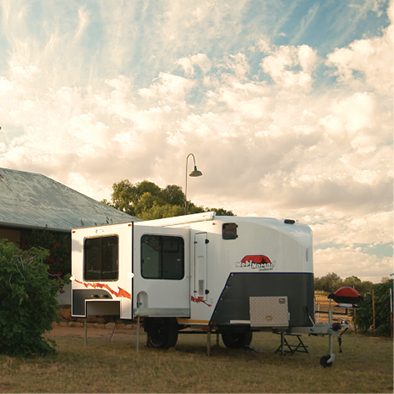
Mobi Nomad
Made in South Africa, these hybrid campers have a lot of great features. Again, quite at home behind the Ranger or the LC200, the designers have taken a different approach with the layout. A spacious ensuite with seperate shower and toilet is located at the front of the unit and features a pull out bed section. A huge fridge/freezer combination and outside kitchen rounds out the main features of the Mobi.
Empty, they only weigh between 1500-1700kg and can be configured up to about 2800kg with the addition of electric brakes and different rims.
Heading off-road, there is a high degree of probability that you will need to repair a tyre or two. Having the right gear with you can mean the difference of continuing on with your trip or having to arrange an expensive recovery. You don’t need to carry an entire tyre shop with you, but with some simple tools and consumables, you can stay on track.
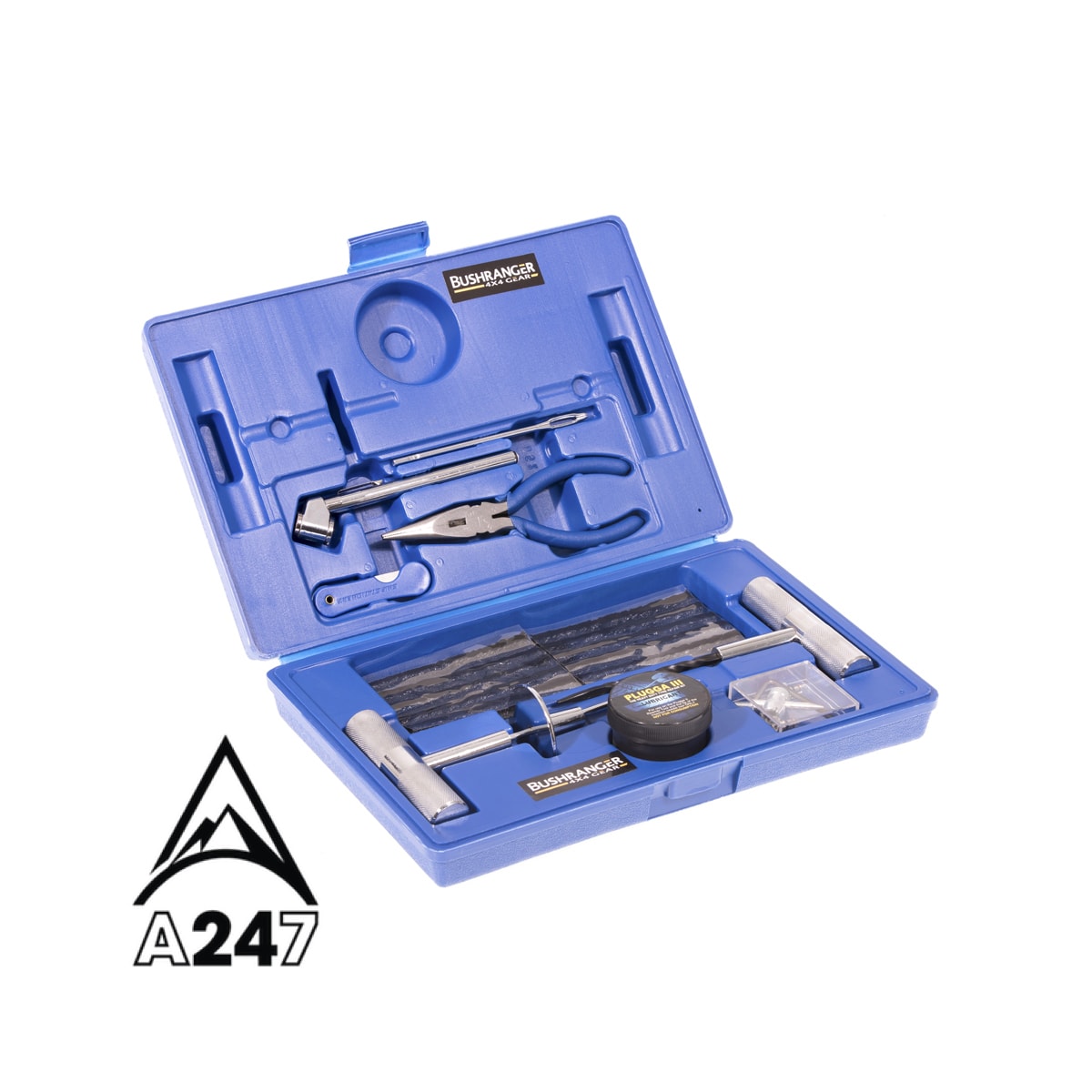
Tyre plugs
Nothing like hair plugs, tyre plugs (and the kit that they come with) can be used to repair a puncture on the tread of area of your tyre.
You are not supposed to plug the side wall of a tyre and it is not recommended. We have, however, seen it done in remote locations and successfully allow the vehicle to make it back to a location where replacement tyres could be sourced.
We found this great video on how to use tyre plugs.
Tyre Pliers
Made in Victoria and supplied to, amongst other places, the Australian Department of Defence, the Tyre Pliers kit is the perfect addition for any serious off-road activity.
They come complete with a set of tyre levers, a bead breaker as well as a a puncture repair kit (including consumables. The entire kit only weighs 2.7kg
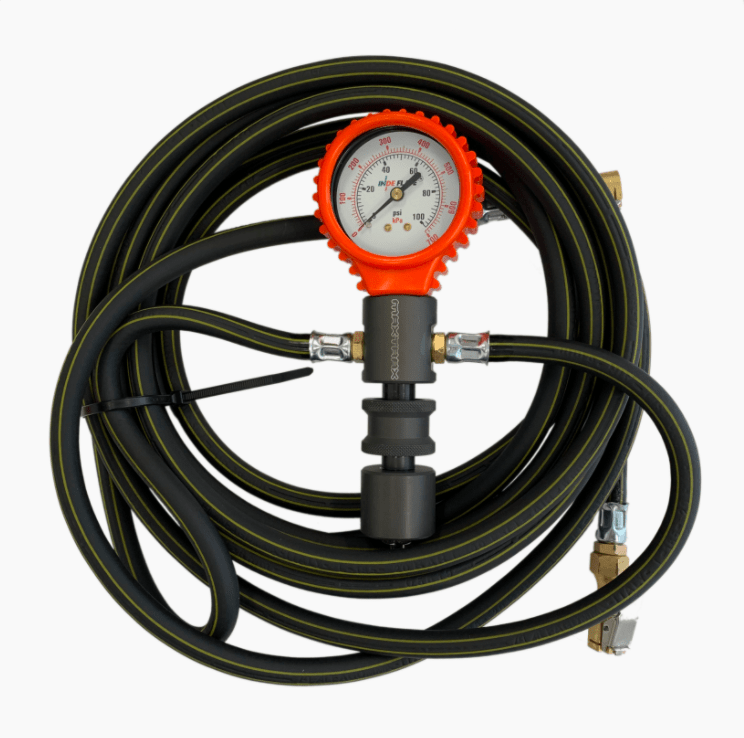
Indefalte
The team from Maxtrx have a new product available to make it much easier and quicker to inflate and deflate more than one tyre at a time.
The Indeflate (two or four hose unit) allows you to quickly get two or four tyres to the correct pressure using a single compressor input. It ends up being a little quicker to get all 4 tyres to pressure and those towing a caravan or camper will see the benefit of the extra time saved.
Tyre Spider
A Clearview Accessories product, the Tyre Spider differs from the previously mentioned Indeflate with the inclusion of a small pressure cylinder and the ability to “siphon” air from up to 3 other tyres through the use of individual valves.
Getting bogged. It’s not a matter of IF but WHEN. Having the right gear doesn’t have to be a huge expense and buying the right gear the first time can save you plenty in the long run. These are some of the items that we either use or have come across.
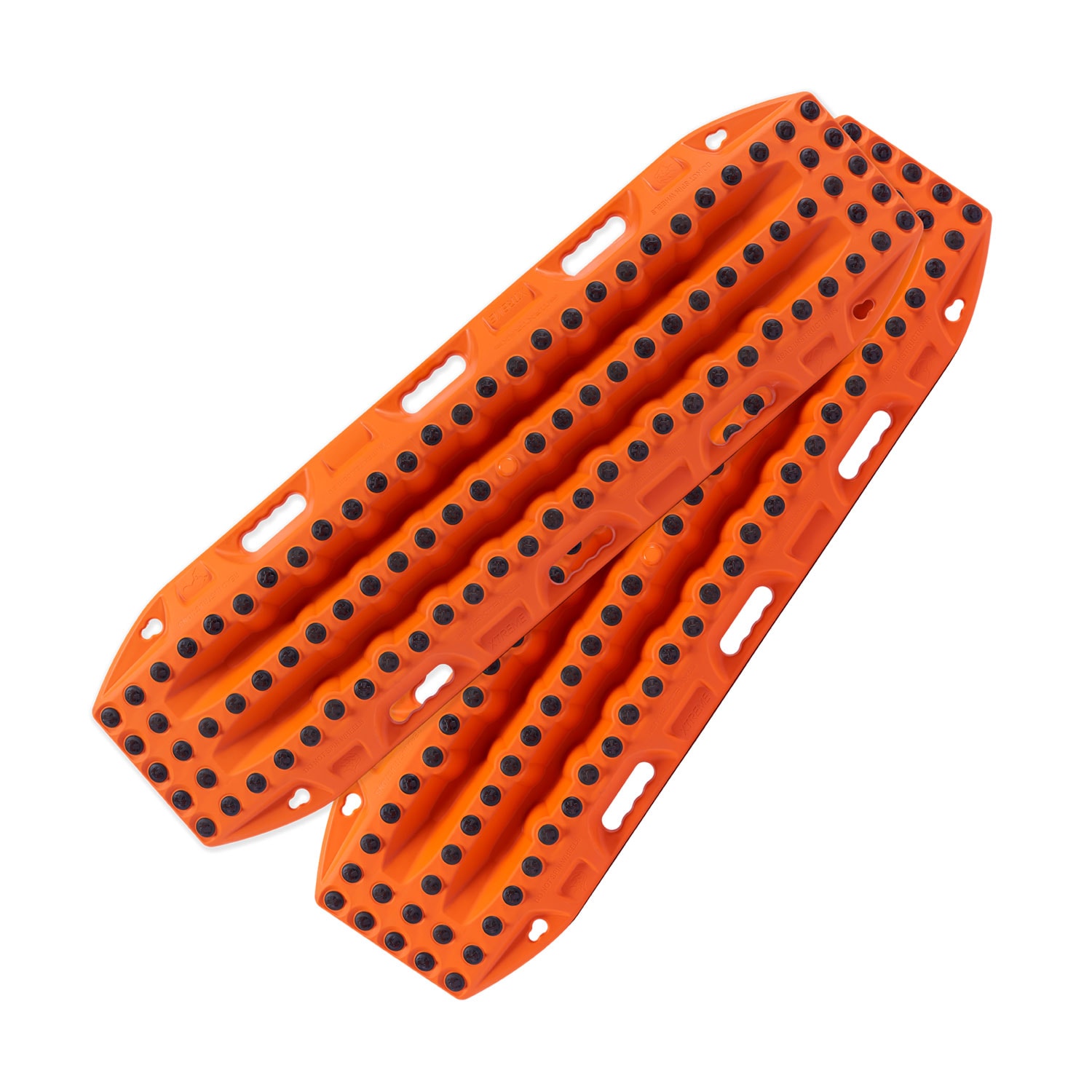
Maxtrax Extreme Recovery Boards
OK, these are a little more expensive than your standard Maxtrax and are considerably more expensive than other brands however, when you are bogged somewhere would you prefer something that is going to last time and time again or something that has a high potential to fail?
Our Maxtrax are the first thing we reach for whenever we need to extract ourselves or someone else. As a result, our original Maxtrax MKII’s quickly show signs of wear and tear on the teeth. The Extreme model, however, has anodised alloy teeth that are replaceable. Being an alloy, they have a higher resistance to wear from spinning tyres than their plastic cousins and the teeth replacement kits are quite cheap. This means that the Maxtrax Extreme’s will outlast pretty much anything else currently on the market.
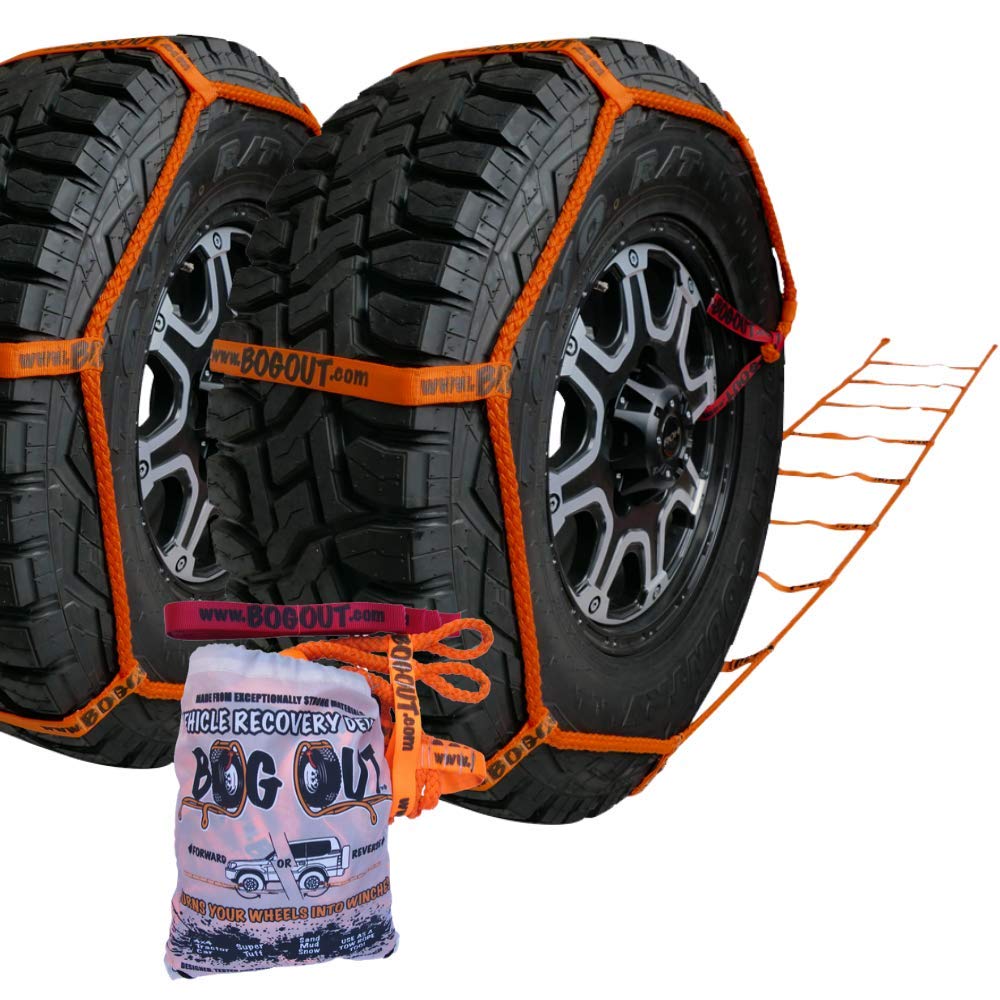
Bog-Outs
We bought a set of these a couple of years ago to see what they were like. Made in QLD, Bog Outs offer a viable alternative to having a winch installed on the front of your fourby. They offer greater versatility than that of a traditional winch in that they can be used on either the front or rear wheels, weigh bugger all and are substantially cheaper than a winch (and install).
Like any winch activity, you still need an anchor point and you need to ensure that everyone stands well clear when using them. Not having any metal components however, do make them a much safer alternative.
Bush Winch
This is a product that we have only recently discovered. Similar to the Bog Outs mentioned above, the Bush Winch uses your vehicle’s wheels to provide the torque required to extract you from the bog. They attach to the wheels using pre-installed lug nuts and the rope is contained on a self-spooling reel. The use of soft shackles instead of steel ones, further reduces the weight and safety of the device.
Bush Winch Anchor Kits
Even with a winch fitted to your vehicle you still need somewhere to winch from and usually the closest anchor point is no-where near where you need it. Eliminate this problem completely by carrying your own anchor. Bush Winch offer a sand kit and a general ground anchor unit.
They are essentially an auger bit that you drill into the ground by hand which then provides a stable and secure anchor point
Kinetic Rope
Kinetic rope is not a new thing. Winches have been optioned with this steel rope replacement wonder for quite some time. What is a relatively new development though is using it instead of a snatch strap for vehicle recoveries.
There is a range of brands that offer kinetic rope solutions. Maxtrax, Sabre Off-road, TJM are just a few on the market.
When purchasing, ensure that you consider the total weight of your vehicle and don’t fall into the trap that a heavier rope is best. Match it to your vehicle to get the best result.

Lan-cor
We recently got our hands on one of these NZ beauties and will provide an in-depth review in Western 4W Driver magazine. The idea is the same as the Bush Winch anchors in that it is essentially a large auger bit. Using person power, the anchor is drilled into the ground and provides a 5.5 tonne winch point. It differs from the Bush Winch solution in that it has a wire-rope that connects the winch point at ground level with the anchor deep into the ground.
There is nothing wrong with having a little OCD when setting up your vehicle. Having a place for everything and being able to easily put your hands on an item without having to perform feats of amazing flexibility or being a master at Tetris is a good thing. The sky is the limit when it comes to how you setup your storage. These are some of the methods that we use or have come across. This is, by no means, an exhaustive list.
Rear storage
This is a small, family owned business in Victoria who produce a range of touring solutions for a wide range of vehicles (they have almost 1000 configurations in their system). We picked up one of their touring units off Gumtree for our 200 series and we love it. The unit uses all the available space with very little wastage and is very easy to fit. So easy in fact, that we remove it after each trip away.
Storage bags
Don’t discount the power of a selection of storage bags. The clear top ones make it easy to see what is inside and if they are made of decent canvas then they are usually tough enough to withstand the rigours of life in a fourby.
We like and use the Red Roads Min Min for stashing gear in the kitchen area of the Ranger.
Cargo crates
Bunnings has a range of storage crates (is there anything they don’t have) that we have found to be very handy. We bought a quantity of the Tactix collapsible crates as we found that they were the perfect size for carrying gear inside the canopy of the Ranger. They stack nicely and you can fold them up when the it is no longer needed.
Equipment and stores can be kept in them and stowed away in the shed until needed. It speeds up our pre-trip loading substantially.
A cardboard box does a similar job but doesn’t seem to last as long.
Fridge slides
Fridge slides make it much easier to access your chest-style 12 volt fridge without doing your back in lifting it in and out of your vehicle. We stumbled across local company, Slide-It Solutions, who are bucking the trend and manufacturing their own, bearing free, fridge slides here in Perth. They use only local material (ok, the packaging is imported) and can offer a fridge slide for almost any current model.
Lithium battery systems are the latest go-to for power storage solutions when building up your touring vehicle or RV (camper or caravan). The weight saving is significant and the actual useable power that is available makes comparing them to a traditional AGM or lead acid battery a no-contest. They are more expensive than those same traditional batteries, however, when you take into consideration their extended life, weight saving (and therefore fuel use) and actual power available, the return on investment quickly swings to lithium’s favour.
There is a huge range of lithium options out there and if there is anything we can offer by the way of advice is that you tend to get what you pay for. Cheaper lithium batteries aren’t always what they are cracked up to be.
Topo DC Power
Topo DC Power is a local, family owned, Western Australian business who build a range of their own lithium battery packs. What we like about them is Ron and his father are passionate about producing the best possible product that they can. Ron’s father is an old-school electronics technician and we reckon he has forgotten more about the field than we will ever know.
Their current range features three sizes; 72Ah, 144Ah and 214Ah and all include DC-DC and solar charging built into the pack. An external 240v charger provides you the ability to charge off mains power when you need to.

Revolution Power Solutions
The team at Revolution Power Solutions started off working in the marine industry. With that said, their batteries are built to withstand life installed on a boat, so they are well and truly proven for 4WD duty. They have a range of batteries to suit a variety of applications and are one of the few to have units rated to 1C. The C rating is an indicator of how quickly the battery can be charged or discharged. 1C means that the battery can be fully charged or discharged in 1 hour (without cooking it). This is a critical requirement if you intend to use your batteries in a high draw setting such as an inverter to run a coffee machine etc.
REDARC
REDARC are the standard that everyone else follows and have been designing and manufacturing 12 volt systems since Noah was a boy (well almost). Their products are proven and our go-to to ensure that we always have power when and where we need it.
Their latest offering, the Go-Block, is a revolutionary concept that allows you to disconnect the battery from the vehicle (or RV) and use it separately. Their unique docking system also allows you to transfer the battery between vehicles to suit your needs.
It doesn’t take much to keep the family comfortable when heading away. If you are not towing a camper or caravan then your choices are limited to tents and swags to ensure everyone gets a good night’s sleep. Over the years we have been through various tent and swag solutions. This is what we are using currently:
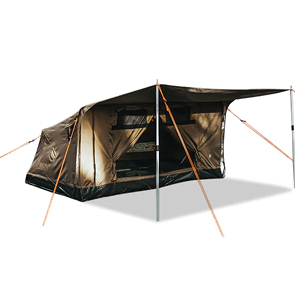
Oztent RS-1 Swag
These are effectively the baby version of the Oztent 30 second tent. They are very roomy and offer plenty of ventilation. They pack up flat, making them perfect for the roof rack, offering little wind resistance.
Unlike a traditional roll up swag, you can’t leave your bedding inside which means that your setup might take a couple of extra minutes.
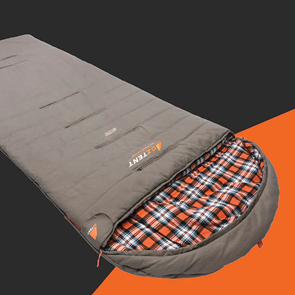
Oztent Redgum Sleeping Bag
A cheap sleeping bag is the last thing you want when setting up camp somewhere remote and where the temperature can rapidly plummet after dark.
We have had plenty of cheaper sleeping bags and they never live up to their claims. Buy these and never have to buy another one again.
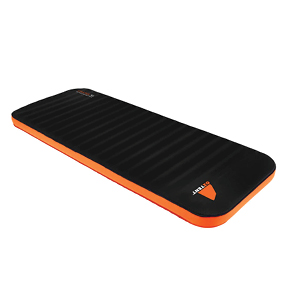
Oztent Stratus XL Single Self-Inflating Mattress
I have never been a fan of inflatable mattresses. That is until I got my hands on one of these. I disagree with calling them self-inflating however that is my only gripe with them. Once inflated, this mattress offers a very comfortable night’s sleep regardless if you are laying on the ground or on a stretcher.
The carry bag also doubles as a pump (it’s actually called a pump sack) that involves you catching any breeze inside the sack (while attached to the mattress) and then squeezing the air in. The idea is that it stops you blowing air into the mattress and introducing humidity from your breath.
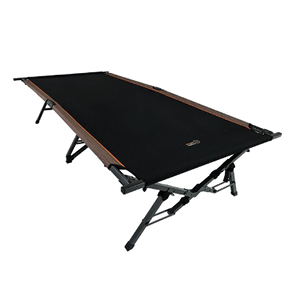
Oztent RS-1S King Single Stretcher
Having spent more than my fair share of sleeping rough on the ground, a good size stretcher is absolute bliss. These are big enough to accommodate the RS-1 Swag and when you stick a self-inflating mattress in there, you are all set.
There should be no excuse for anyone getting bored on a road trip or 4WD adventure. The absence of an internet connection should be embraced where ever possible and a great excuse for kids and adults alike to reconnect with each other and the physical world around them.
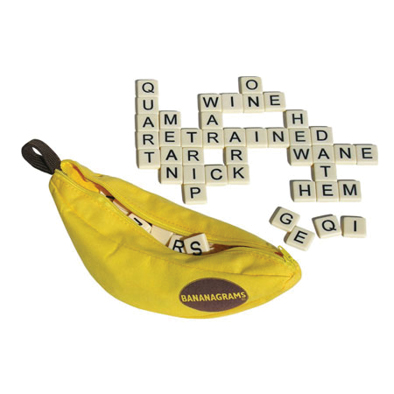
Take some games
Bananagrams, Exploding Kittens and Taco Cat Goat Cheese Pizza (yes that is a game) are current favourites in our household and are small enough to not take up much space. Hours of entertainment.
Capture the moment
Your smartphone can grab some amazing images and has some very powerful editing tools built in to really bring out the colours in your photography. Spend some time trying some different techniques getting the perfect shot.
We are spoilt for choice when it comes to additional tools and resources for making any road trip better. Electronic gadgets and gizmos make keeping the kids entertained easier than ever and usually result in comments to the back seat like “when I was your age”. We have compiled some ideas for making everyone’s adventure that little bit better.

Stargaze
Leaving the city behind, you will quickly discover that there is an entire night sky hidden from view due to light pollution. Suddenly the Milky Way, the Southern Cross and distant planets come twinkling into view.
We have Night Sky installed on our phones and find it quite relaxing to lay back on a swag in the evening using it to identify stars, planets satellites.
It’s available from the Apple Store and there is a similar app also available on the Google Play Store. We are using the free version.

WikiCamps
WikiCamps is a great app for seeing what is around you or during your planning sessions pre-trip. We have used it in the past but now revert to the points of interest data found in our HEMA HX-2

